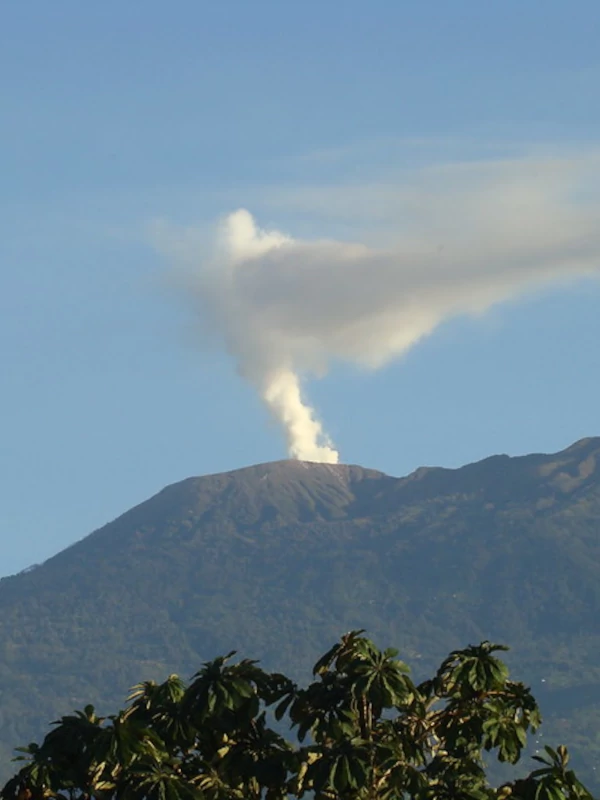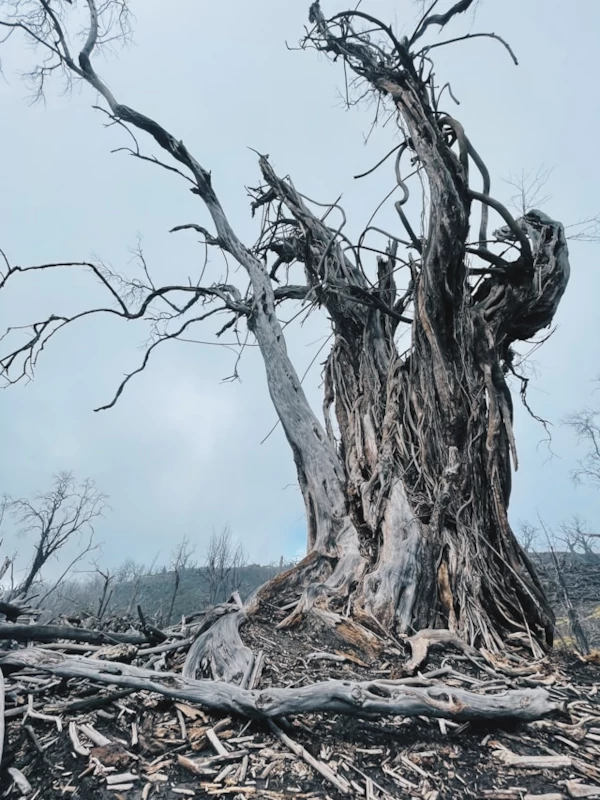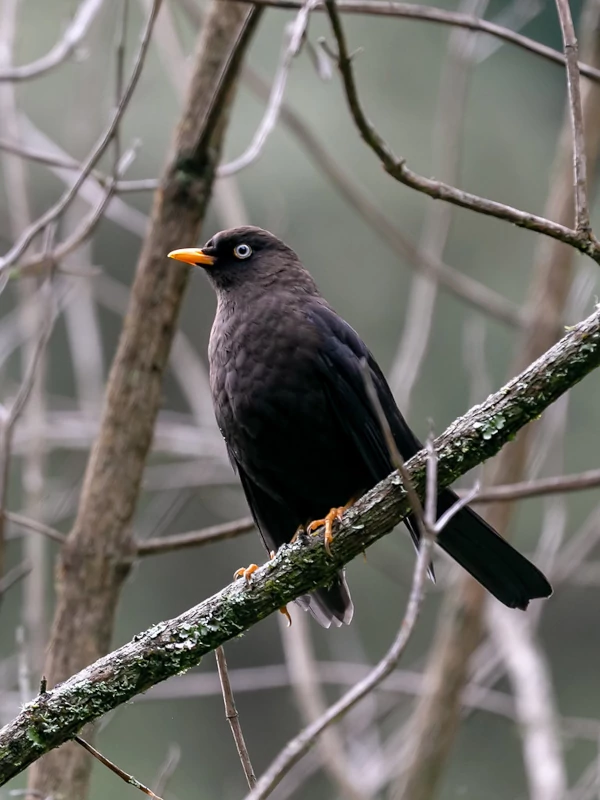With its steam vents, ash-covered slopes, and lush surroundings, Turrialba is a must-visit destination for adventure seekers and nature lovers. Whether you’re hiking to the crater, marveling at the panoramic views, or exploring the surrounding valleys, Turrialba promises an unforgettable experience. Discover why this fiery giant is one of Costa Rica’s most captivating natural wonders.
Turrialba Volcano National Park: Costa Rica’s Fiery Giant
Discover Turrialba Volcano National Park
Turrialba Volcano National Park is home to one of Costa Rica’s most active and dramatic volcanoes, offering visitors a chance to experience the raw power and beauty of nature. Known for its steam vents, ash-covered slopes, and lush surroundings, Turrialba is a must-visit destination for adventure seekers and nature lovers. Whether you’re planning a trip to Costa Rica or simply dreaming of your next adventure, Turrialba will leave you in awe.
About the Park
Turrialba Volcano National Park is centered around the 10,919-foot (3,328-meter) Turrialba Volcano, one of Costa Rica’s most active and historically significant volcanoes. The park’s rugged terrain features steam vents, ash fields, and lush high-altitude ecosystems, making it a unique destination for visitors.
The volcano’s name, “Turrialba,” comes from the indigenous Huetar language and means “land of fire,” a fitting name for this powerful natural wonder. Today, the park is a popular spot for hiking, sightseeing, and photography, offering a glimpse into the forces that shape our planet.
Location and How to Get There
Turrialba Volcano National Park is conveniently located about 50 miles (80 km) east of San José, making it an easy day trip from the capital. The drive takes about 2 hours and offers stunning views of the Central Valley and surrounding mountains.
- By Car: The most flexible option, allowing you to explore at your own pace. The road to the summit is well-maintained but can be steep and winding.
- Guided Tours: Many tour operators offer day trips from San José, which often include transportation, a guide, and stops at nearby attractions.
History and Eruptions
Turrialba Volcano has a long history of activity, with its most recent eruptions occurring between 2014 and 2019. These eruptions have reshaped the landscape, creating a raw and dramatic environment that’s both awe-inspiring and humbling.
- Recent Activity: While Turrialba is currently dormant, it remains one of Costa Rica’s most closely monitored volcanoes.
- Cultural Significance: The volcano has played a significant role in Costa Rican history and culture, inspiring legends and scientific study alike.
Natural Wonders of Turrialba
Turrialba Volcano National Park is a place of raw beauty and geological marvels, offering visitors a chance to explore some of Costa Rica’s most unique landscapes. From its craters to its lush high-altitude ecosystems, the park is a treasure trove of natural wonders. Whether you’re a geology enthusiast, a photographer, or simply someone who loves being in nature, Turrialba will leave you spellbound.
The Main Crater
The main crater is the star attraction of Turrialba Volcano National Park. This massive, bowl-shaped depression is filled with steam vents and ash-covered slopes, creating an otherworldly atmosphere that feels almost alien.
- Unique Feature: The constant activity of the steam vents and the dramatic ash fields make this crater a must-see for visitors.
Flora and Fauna
Despite its harsh, high-altitude environment, Turrialba is home to a variety of hardy plants and wildlife that have adapted to the volcanic terrain.
Flora: Look for mosses, shrubs, and low-growing plants that thrive in the nutrient-rich volcanic soil.
Fauna: The park is a haven for high-altitude birds like the sooty robin and volcano hummingbird, as well as small mammals like rabbits and coyotes.
Panoramic Views from the Summit
One of the most breathtaking experiences at Turrialba is standing at the summit and taking in the panoramic views. On clear days, you can see the Caribbean Sea, as well as the sprawling Central Valley below.
- Best Time for Views: Visit during the dry season (December to April) for the clearest skies.
- Photography Tip: Bring a wide-angle lens to capture the vastness of the landscape.
The Surrounding Valleys and Coffee Plantations
The area around Turrialba Volcano is just as captivating as the park itself. The lush valleys and coffee plantations offer a stark contrast to the volcano’s rugged terrain, providing a glimpse into the region’s agricultural heritage.
- Coffee Tours: Consider visiting a nearby coffee plantation to learn about Costa Rica’s world-famous coffee production.
- Scenic Drives: The roads leading to the park offer stunning views of the surrounding countryside, making the journey as memorable as the destination.
Things to Do in Turrialba Volcano National Park
Turrialba Volcano National Park offers a mix of adventure, natural beauty, and geological wonder, making it a must-visit destination for anyone exploring Costa Rica. Whether you’re hiking to the summit, marveling at the craters, or soaking in panoramic views, there’s something for everyone. Here are the top activities to add to your Turrialba itinerary:
Hiking the Trails
The park features several hiking trails that take you through lush forests and up to the main crater. The trails vary in difficulty, offering something for everyone.
- What to Expect: The trails are well-maintained and offer stunning views of the volcanic landscape and surrounding valleys.
- Pro Tip: Wear sturdy shoes and bring a light jacket, as the high-altitude weather can be chilly and windy.
Exploring the Craters
The main crater and secondary craters are the park’s star attractions. The main crater’s steam vents and ash-covered slopes create an otherworldly atmosphere, while the secondary craters offer a stark contrast.
- Photography Opportunities: Both craters are perfect for capturing dramatic landscapes and unique geological features.
- Educational Value: Learn about the volcano’s history and the forces that shaped its craters through interpretive signs along the trail.
Enjoying the Panoramic Views
One of the highlights of visiting Turrialba is the breathtaking views from the summit. On clear days, you can see the Caribbean Sea, as well as the sprawling Central Valley below.
Best Time for Views: Visit during the dry season (December to April) for the clearest skies.
Photography Tip: Bring a wide-angle lens to capture the vastness of the landscape.
Birdwatching and Wildlife Spotting
Despite its harsh environment, Turrialba is home to a variety of high-altitude birds and wildlife that have adapted to the volcanic terrain.
- Birdwatching: Look for species like the sooty robin and volcano hummingbird, which are unique to high-altitude ecosystems.
- Wildlife: Keep an eye out for small mammals like rabbits and coyotes, as well as hardy plants that thrive in the volcanic soil.
Relaxing and Taking It All In
Sometimes, the best thing to do at Turrialba is simply slow down and enjoy the beauty of nature. Find a quiet spot near the craters or along the trail to soak in the sights and sounds of this unique environment.
- Picnic Areas: Pack a lunch and enjoy a picnic with stunning views of the volcanic landscape.
- Mindful Moments: Take a moment to appreciate the raw power and beauty of one of Costa Rica’s most iconic volcanoes.
Visitor tips
Planning a visit to Turrialba Volcano National Park? Here’s everything you need to know to make the most of your trip. From the best time to visit to what to pack, these tips will help you prepare for an unforgettable adventure at one of Costa Rica’s most active volcanoes.
Best Time to Visit
The dry season (December to April) is the ideal time to visit Turrialba Volcano National Park. During these months, you’ll enjoy clear skies and stunning views of the craters and surrounding landscapes.
- Rainy Season (May to November): While you might encounter afternoon showers, the park is less crowded, and the lush greenery adds to its beauty.
- Early Mornings: Arrive early to avoid clouds that often roll in by midday, especially during the rainy season.
Entrance Fees and Opening Hours
Turrialba Volcano National Park is affordable and easy to access, making it a great option for travelers on a budget.
- Entrance Fee: $13,56 for non-resident adults and ¢1130 for resident adults.
- Opening Hours: The park is open from 5:00 AM to 10:00 AM daily, from December to April, and from 6:00 AM to 10:00 AM daily from May to November.
- Guided Tours: It is mandatory to hire a local guide. Guides are available at the park entrance.
For more updated information visit the official SINAC website.
What to Pack
Packing the right gear can make your visit to Turrialba much more enjoyable. Here’s a quick checklist:
- Layered Clothing: The high-altitude weather can be chilly and windy, so bring a light jacket or sweater.
- Sturdy Shoes: The trails are well-maintained but can be uneven, so wear comfortable hiking shoes.
- Sunscreen and Hat: The sun can be intense at high elevations, even on cloudy days.
- Water and Snacks: Stay hydrated and energized during your visit.
- Camera and Binoculars: Capture the stunning views and spot high-altitude birds.
Safety Tips
Turrialba Volcano National Park is a safe destination, but it’s always good to be prepared. Here are a few tips to keep in mind:
- Stay on Marked Trails: This protects the environment and keeps you safe from unstable terrain.
- Respect the Craters: Avoid getting too close to the edges of the craters, as the ground can be unstable.
- Be Prepared for Weather Changes: The high-altitude weather can change quickly, so bring layers and rain gear.
- Leave No Trace: Pack out all your trash and avoid disturbing the natural environment.
Nearby Attractions and Accommodations
If you have extra time, consider exploring the surrounding area. The nearby town of Turrialba is a great place to learn about Costa Rica’s history and culture.
- Where to Stay: From budget-friendly hostels to luxury lodges, there are plenty of options to suit every budget.
- Other Activities: Visit the Guayabo National Monument, an ancient archaeological site, or take a day trip to Pacuare River for some white-water rafting.




